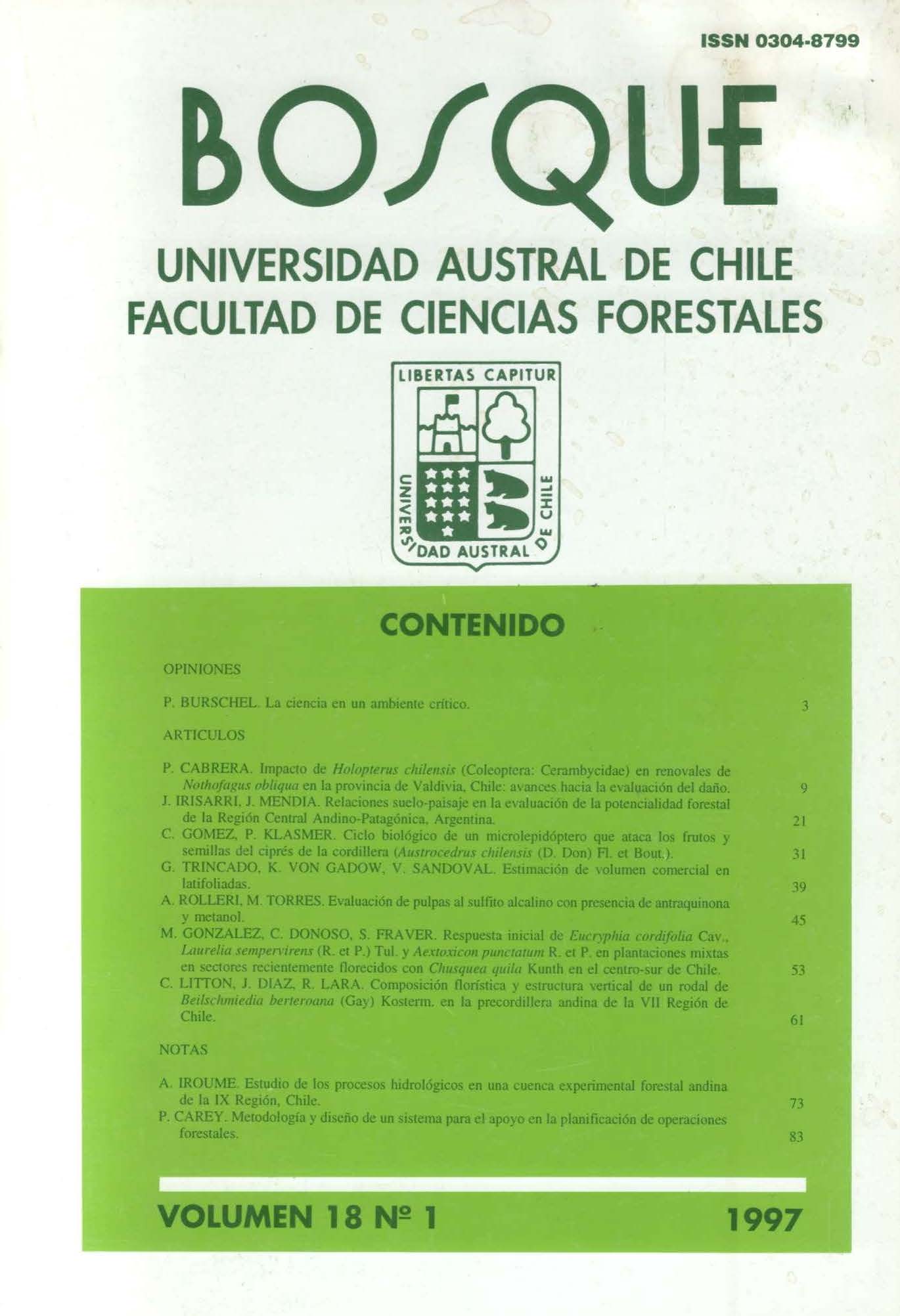Main Article Content
Jun 30, 1997
Abstract
Factors that influence the attack of Holopterus chilensis Blanch, on second growth Nothofagus obliqua (Mirb.) Oerst. forests were studied in the province of Valdivia from June-December 1992. Fifty-two 250 m2 plots, in the north and south of the province, were sampled. Overall, 22.4% of the sampled trees were attacked by H. chilensis. There were no differences in attack levels between the northern and southern areas of the province. However, there were differences between the los Andes Cordillera, the Central Valley, and la Costa Cordillera: The Central Valley was the most heavily attacked. In general, trees growing on the southfacing slopes were more heavily attacked than were trees on the northfacing slopes. Attack density tended to decrease in higher altitudes. Also, the frequency of attack tended to increase as stand density declined. Although a relationship between the number of exit holes and the damage level within the trees was found it was not possible, based on the number of exit holes, to estimate internal damage.


